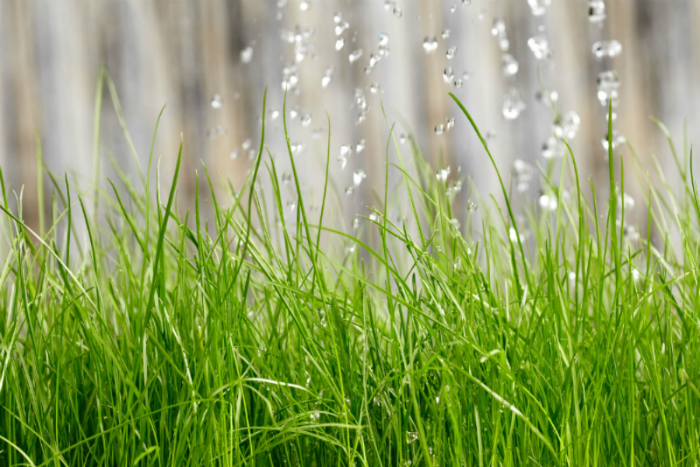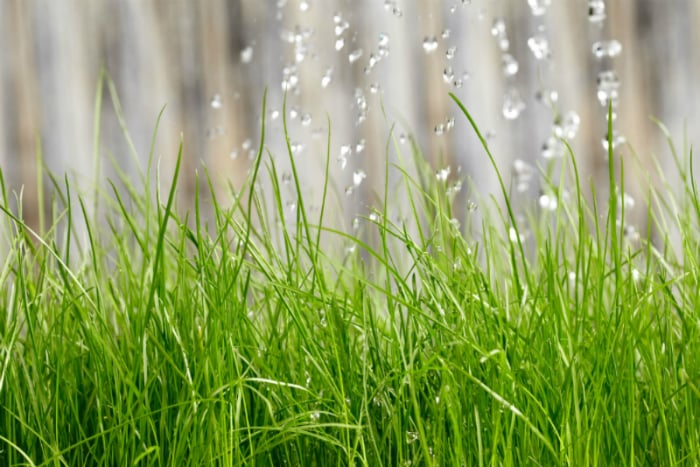
Remember when you first installed your lawn, how lush and beautiful it looked? Your yard was the envy of the neighbourhood and the best part – you didn't have to do anything about it! Your lawn looked perfect. And then reality hit and you learned that your seemingly simple yard was actually a high maintenance monster. In order to keep it green, manicured, and homogenous, you spent hours behind the mower. You weeded, edged, fertilized, and watered. In fact, you spent more time taking care of your lawn than you did enjoying it! Caring for a high maintenance law is time-consuming, costly, and resource intensive – so ditch your yard diva with some low maintenance alternatives from Nutri-Lawn.
What is a Low Maintenance Lawn?
Conventional lawns are typically made up of a small number of fine turf grasses. These grasses are normally selected primarily for their attractiveness. Unfortunately, keeping these grasses looking luxurious requires constant attention and irrigation from your inground sprinkler system. A low maintenance lawn, on the other hand, is made up of a more diverse mix of hardy, drought-tolerant, and slow-growing turf grasses and fescues. These species are great because they require less mowing, fertilizing, and watering.
High or Low – Which Way Should You Go?
High maintenance lawns look amazing, but at what cost? The following are few of the problems associated with conventional lawns:
- They require an awful lot of water to look good. Municipal water consumption doubles in the summer months, mainly as a result of lawn and garden watering. High maintenance lawns require constant attention and irrigation from an inground sprinkler system. This excess consumption lowers water tables and reduces stream flows, which affects fish and aquatic life. Low maintenance lawns, on the other hand, require less water from your inground sprinkler system.
- They produce more air and noise pollution thanks to constant mowing. A meticulously manicured lawn can often require mowing at least once a week. If you use a gasoline or electric powered motor, you're responsible for a variety of air and noise pollutants. Low maintenance lawns grow slower than conventional lawns and thus require significantly fewer mowing treatments.
- Increased fertilizer requirements. High maintenance grasses don't always adapt well to Burlington soil types. As such, homeowners need to invest in multiple fertilizer treatments in order to keep their yard looking lush. Low maintenance lawns include a mix of grasses that are best suited to the soil type on your property, so you won't have to spend extra time or money keeping it alive.
Watery Benefits of Low Maintenance Lawns
Low maintenance lawns can help reduce your inground irrigation system use dramatically. When you first install a low maintenance lawn, make sure that your automatic sprinkler system is set to come on regularly. This will help ensure that the grass seeds are well saturated and capable of becoming established. Once the lawn is rooted, and if you have selected species well-suited to your site's moisture conditions, your lawn should only require small doses of water throughout the summer.
While low maintenance lawns typically appear less uniform than conventional lawns, they require only a fraction of the effort and cost to take care of. If you're interested in learning more about the irrigation and maintenance benefit of this alternative lawn covering, contact the automatic sprinkler system installers and lawn care experts at Nutri-Lawn. Low maintenance lawns are a snap to care for when paired with a high-efficiency inground sprinkler system, so what are you waiting for? Ditch your diva lawn for an affordable alternative with help from the experts at Nutri-Lawn.






